These are the ratings for central bank governors for the Americas region in 2017.
For 23 years, Global Finance has been grading central bankers on how well they do their jobs. Our ratings are largely based on inflation control, economic growth, currency stability and interest-rate management. Other factors taken into account are central bankers’ skills in supervising financial institutions and their determination to protect their independence in the face of political pressure. Scroll down for more on individual central bank governors.
|
THE AMERICAS | |||
|---|---|---|---|
| Country | Central Banker Name | 2017 | 2016 |
|
Argentina |
Federico Sturzenegger |
B- |
B |
|
Bolivia |
Pablo Ramos Sánchez |
B+ |
B+** |
|
Brazil |
Ilan Goldfajn |
A- |
Too early to say |
|
Canada |
Stephen Poloz |
B+ |
B- |
|
Chile |
Mario Marcel |
B |
B** |
|
Colombia |
Juan José Echavarría |
B |
B+** |
|
Costa Rica |
Olivier Castro Pérez |
B+ |
B+ |
|
Dominican Republic |
Héctor Valdez Albizu |
A- |
N/A* |
|
Ecuador |
Verónica Artola |
Too early to say |
B** |
|
El Salvador |
Oscar Cabrera Melgar |
B+ |
N/A* |
|
Guatemala |
Sergio Francisco Recinos Rivera |
B |
C** |
|
Honduras |
Manuel de Jesús Bautista |
A |
N/A* |
|
Jamaica |
Brian Wynter |
B |
N/A* |
|
Mexico |
Agustín Carstens |
B |
A- |
|
Nicaragua |
Leonardo Ovidio Reyes Ramírez |
B+ |
N/A* |
|
Paraguay |
Carlos Fernández Valdovinos |
A |
A |
|
Peru |
Julio Velarde Flores |
B+ |
A |
|
United States |
Janet Yellen |
A |
A- |
|
Uruguay |
Mario Bergara |
B+ |
B+ |
|
Venezuela |
Ricardo Sanguino |
F |
F** |
| NORTH AMERICA |
|---|

CANADA
Stephen Poloz
GRADE: B+
The Bank of Canada raised its overnight interest rate twice this summer, bringing the benchmark rate up to 1% from 0.5% in quarter-point steps, as the economy grew at a rate that analysts deemed above its long-term potential, although core inflation remained below 2%. With diminishing spare capacity in the economy and strong consumer spending, the bank’s governing council decided it was time to begin removing some monetary policy stimulus. It said future moves in rates would be guided by incoming data, “as they inform the bank’s inflation outlook, keeping in mind continued uncertainty and financial system vulnerabilities.”
The global economic expansion is becoming more synchronous, the governing council said. “However, significant geopolitical risks and uncertainties around international trade and fiscal policies remain, leading to a weaker US dollar against many major currencies,” it added. The Canadian dollar has strengthened, also reflecting the strength of the Canadian economy.
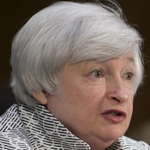
UNITED STATES
Janet Yellen
GRADE: A
The Federal Reserve is out front as a growing number of central banks begin to move away from highly accommodative monetary policies. Low inflation and modest wage growth failed to deter the Yellen-led Fed from raising rates a quarter point in March and again in June, following last December’s initial hike, and announcing the central bank would start reducing its $4.5 trillion portfolio relatively soon.
Asked about Yellen by reporters on Air Force One, President Trump said, “I like her, and I respect her.” Trump said the economy is doing well, with the stock market hitting record highs, unemployment very low and companies moving jobs back to the US. Fed officials expect to continue with gradual rate increases if the economy expands at a moderate rate. However, the recent decline in reported inflation could ultimately slow the pace of policy tightening. Yellen’s term expires next February; no replacement had been named as Global Finance went to press.
| LATIN AMERICA |
|---|

ARGENTINA
Federico Sturzenegger
GRADE: B-
Although president Macri has given government entities greater autonomy, to improve monetary policy effectiveness, the OECD is calling for greater central bank independence.
The official inflation target is 12%-17% for 2017, but the OECD predicts the figure will be 21.8%. The central bank has intervened in the forex market to halt the peso’s plunge against the dollar, making it harder for the institution to improve its solvency and exacerbating inflation. It has also kept interest rates high to tackle inflation. The OECD predicts GDP will grow by 2.9% this year.
BOLIVIA
Pablo Ramos Sánchez
GRADE: B+
Since his appointment in January, Ramos has tackled factors including customs strikes in Chile that halted trade and unstable Brazilian politics that could impact prices for Bolivian natural gas imports. Although not at 2014 highs, international reserves have been rising, reversing trend. Ramos reduced banking sector reserve requirements in May to counter a seasonal decline in liquidity, while lowering interest rates to support economic growth. But debt levels remain high due to recent bond issues to finance infrastructure projects.
BRAZIL
Ilan Goldfajn
GRADE: A-
Brazil’s central bank has been unable to fully tweak monetary policy due to the Temer administration’s weakened political standing. Nevertheless, economists predict inflation will end the year below the official 4.5% target.
The central bank cut the official target for the first time in more than a decade, to 4.25% for 2019. Inflation hovered near 11% in 2016, prompting interest rate cuts whose size could be reduced for the remainder of 2017, as they are currently at their lowest level since 2013. Stable policies are keeping investor optimism up amid political uncertainties.
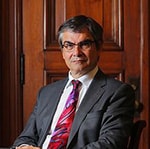
CHILE
Mario Marcel
GRADE: B
The central bank has kept interest rates steady, despite drops in the country’s inflation rate, following rate cuts early this year. Inflation remains below the 3% official target.
Yet, low international copper prices and rising debt along with weaker economic growth led Standard & Poor’s to downgrade the nation’s sovereign rating in July—from AA- to A+. It was the first such downgrade in several decades. Nevertheless, Chile retains its position as Latin America’s highest-rated sovereign bond issuer. The central bank predicts the negative ratings action could negatively impact the government’s external financing costs.
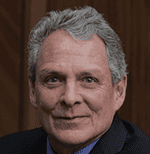
COLOMBIA
Juan José Echavarría
GRADE: B
An Oxford-educated economist, Echavarría took the bank’s helm in January and has focused on stabilizing the peso and supporting economic growth. Inflation, however, remains troublesome, standing at near 9% in 2016, compared with a 2%-4% official target that has not been met in several years.
After a series of previous interest-rate hikes to curb inflation, Echavarría cut rates to support growth, estimated at only 1.8% for 2017. Analysts are concerned over Echavarría’s close relationship with president Juan Miguel Santos. The central banker previously served as Santos’s campaign manager, but he vows to maintain bank autonomy.
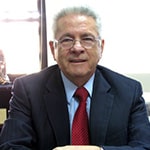
COSTA RICA
Olivier Castro Pérez
GRADE: B+
Since taking over in 2014, Castro made revising the ceiling on the forex band a priority to reduce currency volatility. The currency has continued to stabilize, allowing him to also focus on inflation, which dipped below the 3% target this year.
The central banker, however, was cited last year for possible conflicts of interest, as his son was legal counsel to the nation’s banking association, potentially giving banks access to privileged central bank information, including forex moves and monetary policy decisions. The situation puts his commitment to transparency in question.
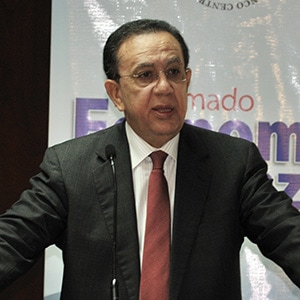
DOMINICAN REPUBLIC
Héctor Valdez Albizu
GRADE: A-
Following the central bank’s lowering of banking sector reserve requirements to free capital flows for economic growth in tandem with a series of interest rate cuts, increased credit demand is now expected to boost the country’s GDP growth above this year’s 5% forecast.
The bank’s policies have supported the peso’s stability and kept inflation in check. The situation sparked a Moody’s sovereign issuer ratings upgrade from B1 to Ba3 this year. Valdez, whose first job at the bank was in 1970, was central bank governor from 1994 to 2000, and was reappointed in 2004.

ECUADOR
Verónica Artola
Too early to say
It is too early to grade Artola, as she was only recently appointed by President Lenín Moreno, who was himself sworn-in only last May. She is a former deputy Planning and Development minister who has held several central bank positions in the past.
Artola’s challenges include dealing with the country’s strong liquidity problems caused by falling global oil prices that are negatively impacting the OPEC member’s bottom line. Ecuador is also still in recovery mode from a 2016 earthquake. Following a 1.5% GDP contraction in 2016, the official growth target is near 1% for 2017.
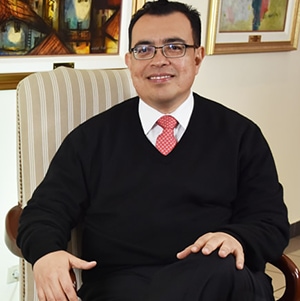
EL SALVADOR
Oscar Cabrera Melgar
GRADE: B+
The central bank forecasts GDP expansion of 2.3% for 2017, driven by strong growth in the country’s services and agricultural sectors, as well as robust domestic demand. Remittances from Salvadorans residing abroad, particularly in the US, are also an important factor driving economic growth.
A steady flow of domestic and foreign private-sector investments continues to contribute to the country’s strengthening economic outlook. In the first quarter of 2017, El Salvador posted its first current account surplus since 2001. The central bank’s prudent policies are among factors cited for driving improvements.
GUATEMALA
Sergio Recinos Rivera
GRADE: B
The local currency, the quetzal, has continued to strengthen against the dollar, reaching its strongest levels since 1999. The situation poses a significant challenge to the country’s competitiveness in international trade.
The Guatemalan economy has been decelerating and inflation rising through mid-year, although inflation is still expected to be an acceptable 4.5% by year-end. The central bank predicts moderate GDP growth of 3%-3.8% for 2017. Remittances from Guatemalans abroad are expected to grow by 10% year-on-year, to $8 billion. Recinos is leading efforts to strengthen banking supervision to ensure the financial sector’s ongoing stability.
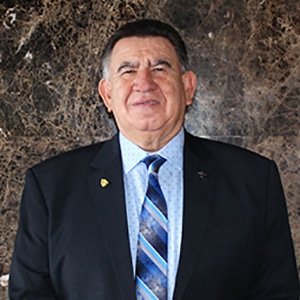
HONDURAS
Manuel de Jesús Bautista
GRADE: A
Despite this being an election year, which has traditionally fueled investor caution, the Honduran economy remains stable and is expected to expand by 3.7% in 2017, driven by growth in manufacturing, agriculture and construction. Higher prices for local commodities have also contributed to growth.
Investor confidence has been prompted by prudent economic policies, and inflation is forecast to end the year at 4%, below the initial outlook, while the local currency, the lempira, has strengthened. Standard & Poor’s in July upgraded the sovereign rating from B+ to BB-, the highest-ever rating for Honduras.
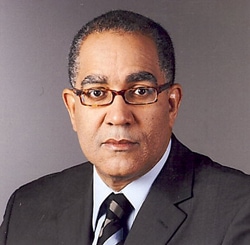
JAMAICA
Brian Wynter
GRADE: B
The central bank is moving toward a risk-based approach to banking-sector supervision in order to strengthen the system, launching a strategy to proactively police risky institutions. Inflation remains a concern, with the bank expecting a marginal spike this year due to flooding that boosted food prices. Inflation for the fiscal year is expected at 4%-6%.
On the current account deficit, the country posted a single-digit gap this year for the first time in two decades, because of ongoing reforms. The IMF continues to push for greater central bank governance and independence.
MEXICO
Agustín Carstens
GRADE: B
Former Finance minister Carstens, who has headed the central bank since 2010, is expected to step down in late November to head the Bank for International Settlements (BIS). Carstens’ tenure was scheduled to end in 2021.
Under his watch, the central bank hiked interest rates to tackle an inflation spike that is expected to dissipate by year-end. Inflation remains high, topping 6% in June (compared with a 3% official target), its highest level in nearly a decade. The central bank is closely watching Washington’s calls for renegotiating NAFTA and imposing tariffs on Mexican imports.
NICARAGUA
Leonardo Ovidio Reyes Ramírez
GRADE: B+
The Nicaraguan economy is forecast to grow by 4.5%-5% in 2017, following a strong 4.7% expansion last year. Growth is being driven by stronger exports and increased construction activity. The central bank has contributed to prudent policies aimed at countering dramatic reductions in assistance from Venezuela that could otherwise impact this year’s GDP performance.
New US laws also seek to possibly limit Nicaraguan access to international financing, unless certain political conditions are met, posing further threats to growth. Inflation remains problematic and is expected to end 2017 as high as 6%.
PARAGUAY
Carlos Fernández Valdovinos
GRADE: A
Paraguay expects to post 4.2% GDP growth this year, above last year’s 4% expansion, remaining one of the region’s strongest performers. Inflation remains under control, with a 4% target for 2017. The government has successfully pushed through needed structural reforms.
The central bank is working to manage its growing international reserves, which have risen to around $8 billion, for which it sought technical assistance from the World Bank. The bank is prepared to confront the possible fallout from the political crisis in neighboring Brazil, one of Paraguay’s main trading partners.
PERU
Julio Velarde Flores
GRADE: B+
Economic growth has been dampened by the impact of an ongoing bribery scandal involving Brazil’s Odebrecht construction company, as well as this year’s heavy flooding. The government implemented an economic stimulus package to support growth, which the central bank predicts to hit 2.7% in 2017, down from 3.9% in 2016.
The bank expects inflation to end the year at 2.2% (within the 1%-3% official target range), after starting the year with the largest monthly inflation rise in nearly two decades. Velarde is counting on the administration’s fiscal stimulus to boost credit demand.
URUGUAY
Mario Bergara
GRADE: B+
Bergara is part of the economic team that is designing and executing policies to stimulate the country’s economic recovery. In March, inflation fell to within the official target range of 3-7% for the first time since December 2010, and has continued to drop throughout the year. In May, the central bank doubled its 2017 GDP forecast, to 2%. GDP grew by only 1.2% in 2016.
The central bank has intervened in the foreign exchange market to reduce the peso’s volatility. Bergara, a former finance minister, has been a steady steward through a challenging time. He has hinted at a possible presidential run in 2019.
VENEZUELA
Ricardo Sanguino
GRADE: F
Appointed in January 2017, Sanguino is an economist and close ally of socialist president Nicolas Maduro. A member of the National Assembly since 2000, he has described central banks as “the creation of the global capitalist system.” Venezuela’s central bank has little autonomy and has not published any key economic data since the end of 2015. The IMF predicts the economy, which has been in a tailspin, will shrink by 4.5% in 2017, with inflation soaring 700% to 1,660%, depending on the forecaster. International reserves dipped below the $10 billion mark this year, for the first time in 15 years.



